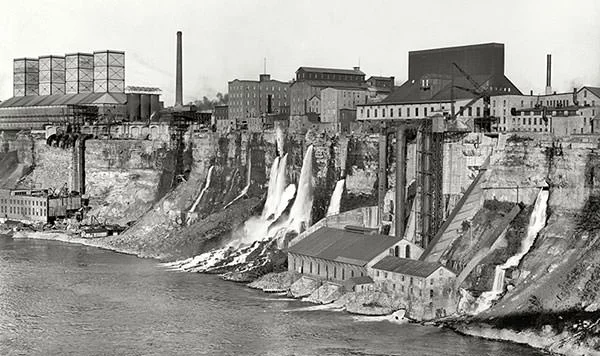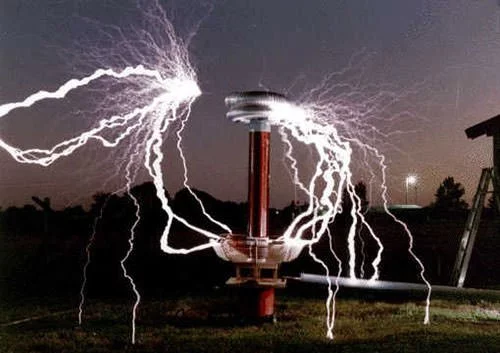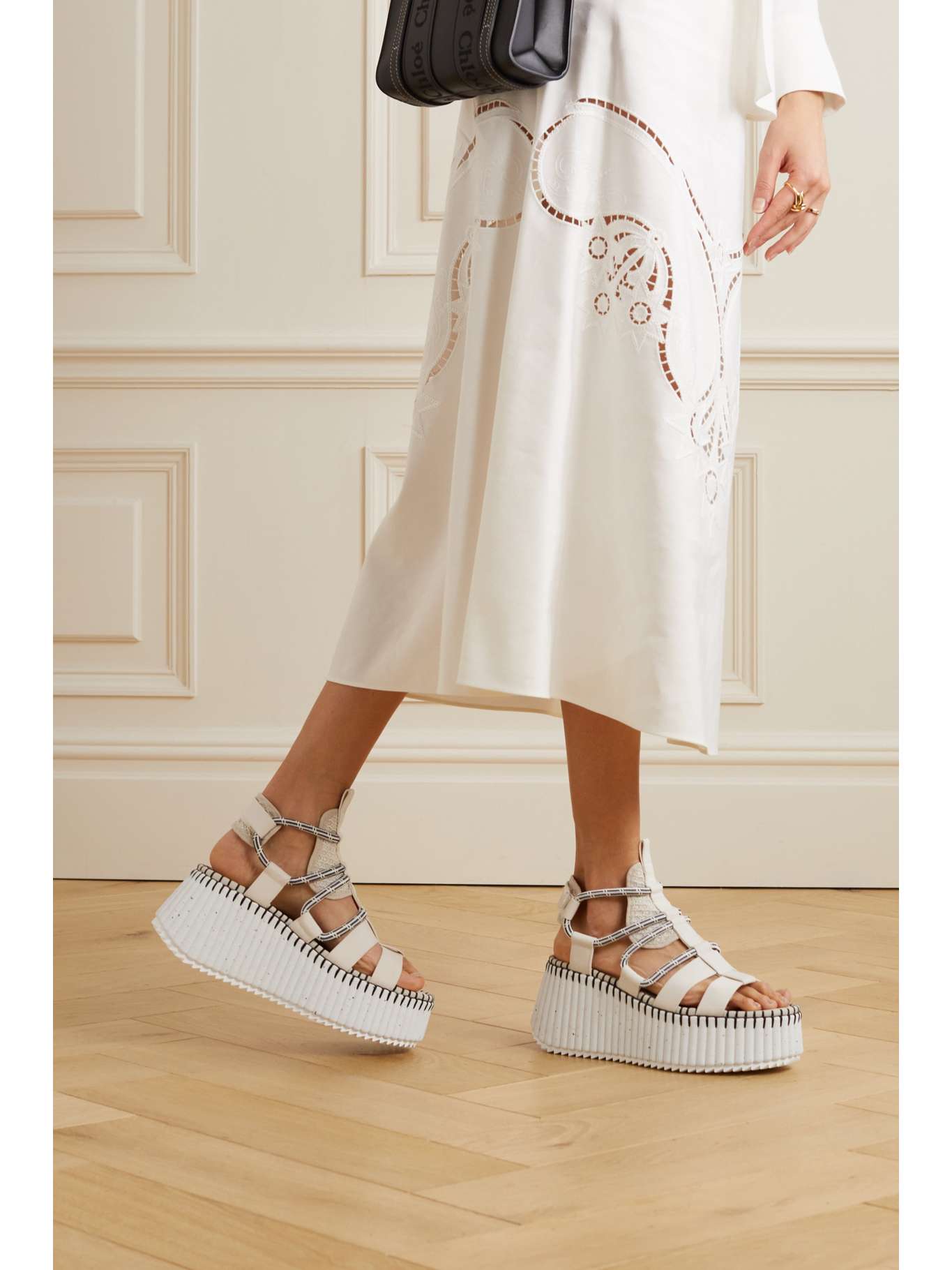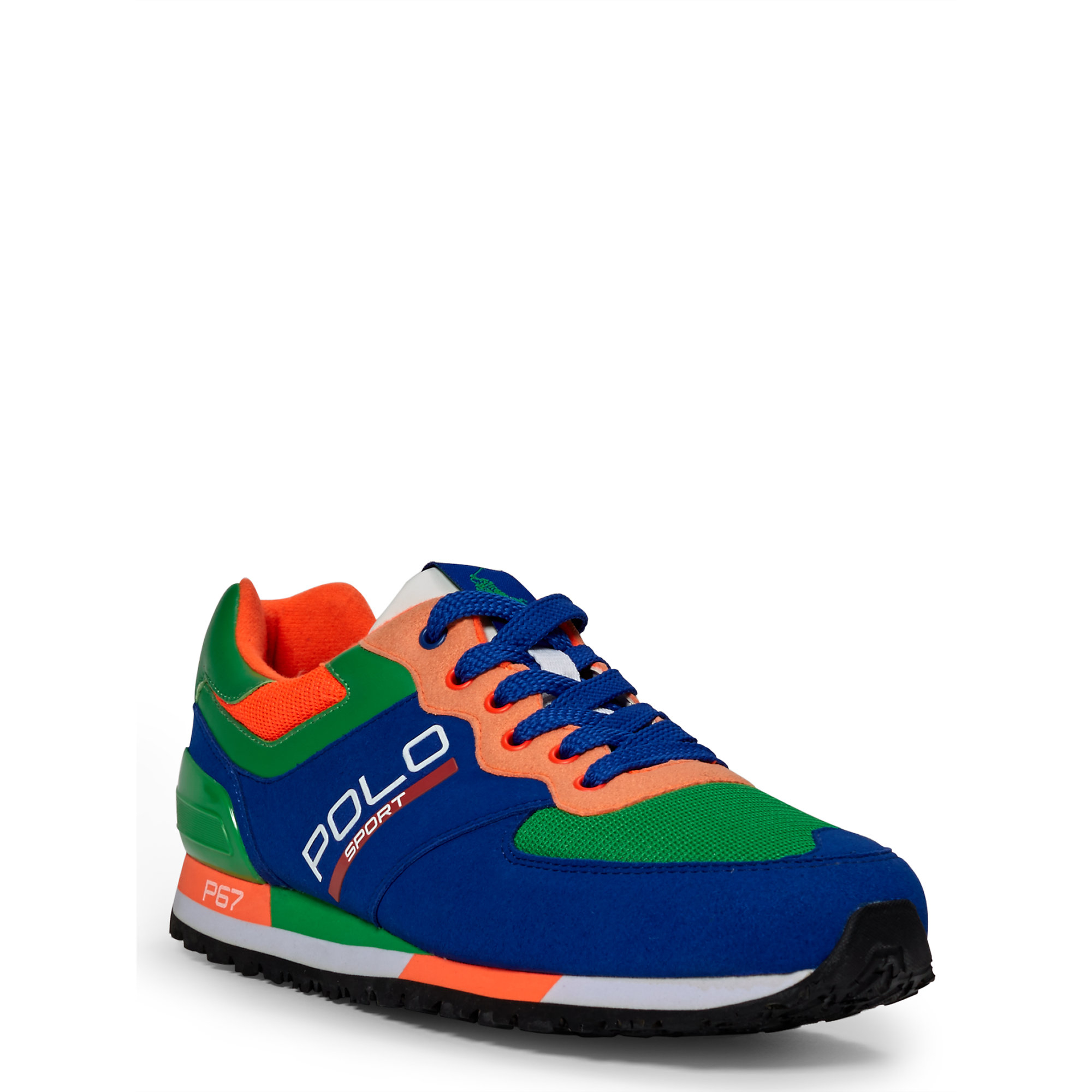Discover Pandipedia
Pandipedia is the world's first encyclopaedia of machine generated content approved by humans. You can contribute by simply searching and clicking/tapping on "Add To Pandipedia" in the answer you like. Learn More
Expand the world's knowledge as you search and help others. Go you!

Mira Murati, OpenAI's Chief Technology Officer, announced her departure after six and a half years with the company, stating it was a difficult decision but felt like the right moment. She expressed her gratitude for the support she received, particularly from Sam Altman and Greg Brockman, highlighting the team's achievements in AI innovation during her tenure[1][4].
Murati also noted her interest in exploring new opportunities while ensuring a smooth transition for the team[2]. Her departure follows a period of significant leadership changes at OpenAI, including her temporary role as CEO when Altman was ousted[4].
Let's look at alternatives:
- Modify the query.
- Start a new thread.
- Remove sources (if manually added).
- Request a manual search from our human research team.

Adidas Samba
A legendary sneaker that has become a must-have in every collection, dominating the street style scene for its combination of simplicity and functionality[1][2][5].

Nike Air Force 1
Known for its classic design and versatility, it pairs well with nearly any outfit, making it a favorite among sneaker enthusiasts[6][9][11].
New Balance 550
A retro style that's recently become popular for its comfort and nostalgic appeal, making it a go-to for both casual and sporty looks[6][9][11].
Veja Esplar
A sustainable sneaker made with eco-friendly materials, it's both stylish and versatile, suitable for various occasions[6][11].

Converse Chuck Taylor All Star
An iconic sneaker that remains fashionable, recognized for its lightweight and breathable canvas, ideal for summer days or casual outings[9][11].
Gucci Screener
A luxury option that bridges the gap between high fashion and sporty style, made with vintage-inspired materials[8].

Hoka Clifton 9
Offers an exceptional level of cushioning and comfort, perfect for long walks or runs while maintaining a stylish look[5][6].

Onitsuka Tiger Mexico 66
Combining retro styling with modern comfort, these sneakers are characterized by their unique designs and vibrant colorways[5][10].
Axel Arigato Clean 90
A minimalist leather sneaker that strikes a balance between style and comfort, suitable for various ensembles[8][11].
Salomon Speedcross 3
Known for its sporty appeal and comfortable fit, this sneaker can be styled with a variety of outfits from casual to dressy[8].
Nike Dunk Low
Recognized for its comfort and stylish appearance, this sneaker has been a staple in the sneaker culture for years[9].
Adidas Gazelle
This sneaker is available in numerous colors, offering a stylish way to incorporate bold hues into your wardrobe[10].
Allbirds Tree Runners
Made from sustainable materials, these sneakers are lightweight, breathable, and perfect for casual wear or running errands[6][11].
Superga Classic Sneaker
This versatile shoe combines comfort with style, available in multiple colors and designs for an everyday look[11].
Common Projects Achilles
A premium sneaker that focuses on minimalism and luxury materials, celebrated for its timeless design[11].
Balenciaga Triple S
A statement chunky sneaker that adds a bold touch to any outfit, famous for its layered silhouette and streetwear vibe[11].
Isabel Marant Bekett
This sneaker combines the elements of a wedge shoe with a casual look, making it fun and stylish[11].

Nike Killshot 2
A classic tennis sneaker, it's admired for its sleek design and comfort, suitable for both sports and casual settings[5][6].
Chloe Nama Platform
A platform sneaker that combines luxury with playful aesthetics, available in various textures and colors[8][11].
Ralph Lauren Polo Sneakers
These offer a casual yet polished look, ideal for elevating a laid-back outfit without compromising comfort[9].
Maison Margiela Replica
A unique blend of retro and contemporary, it's designed for those who appreciate vintage chic in their footwear[11].
Fila Disruptor II
Known for its distinctive chunky silhouette, it's a great choice for those looking to make a bold fashion statement[6].
Marine Serre MS Rise
A lifestyle sneaker that combines functionality with a striking design, perfect for fashion enthusiasts[8].

New Balance 9060
Fusing elements of retro and modern design, this sneaker epitomizes contemporary street style while ensuring comfort[8].

Adidas Country OG
A heritage sneaker that's gained traction for its classic silhouette and comfortable fit, it's perfect for casual wear[5].
Let's look at alternatives:
- Modify the query.
- Start a new thread.
- Remove sources (if manually added).
- Request a manual search from our human research team.
Get more accurate answers with Super Search, upload files, personalised discovery feed, save searches and contribute to the PandiPedia.
The Christmas tree, a central symbol of the holiday season, has a rich and varied history that reflects cultural and religious traditions spanning centuries. Its exact origins are often debated, with numerous claims and legends suggesting different roots.
Early Usage of Evergreens
The practice of using evergreens in winter celebrations can be traced back to ancient civilizations. Evergreens were symbolic of life amidst winter's cold and were utilized in various pagan rituals, notably during the Roman festival of Saturnalia, which honored the god Saturn. During this time, greenery was hung in homes in hopes of good fortune and protection from evil, a practice seen in various cultures, including those of ancient Egypt and Scandinavia[1][10].
Christian Connections

The transition from pagan to Christian traditions is exemplified by the tale of Saint Boniface in the 8th century. According to legend, while evangelizing in Germany, he encountered pagans who worshipped a sacred oak tree. To demonstrate the power of Christianity, he cut down the oak, and a fir tree grew in its place, symbolizing eternal life and the Holy Trinity due to its triangular shape. This story, while compelling, lacks definitive historical evidence but is often cited as a precursor to the Christmas tree tradition[3][6].
The First Christmas Trees

The first documented use of a decorated Christmas tree occurred in 1419 in Freiburg, Germany, where a guild reportedly decorated a tree with apples and sweets[11]. By the 16th century, evidence of decorated trees became more common. Records indicate that by 1605, trees were adorned with roses, apples, and other embellishments in Strasbourg, Alsace[3][5][10]. This period marks the emergence of what we recognize as the modern Christmas tree.
Contrary to popular belief that Martin Luther was the first to adorn a tree with candles, the specific origins of tree decoration are more complex. Luther is credited with inspiring this practice during a winter stroll illuminated by starlight in the 16th century, leading him to recreate the scene with a candle-lit tree for his family[2][10].
Influence of Royalty

The introduction of the Christmas tree to England is often attributed to Queen Charlotte, the German wife of King George III, who set up a Christmas tree in Windsor in December 1800. She decorated it with fruit and candles during a Christmas gathering, creating a festive spectacle for children[2][9]. However, it was her grandson, Prince Albert, along with Queen Victoria, who popularized the Christmas tree in the UK during the mid-19th century. In 1848, an illustration depicting the royal family around a decorated tree appeared in the Illustrated London News, which sparked widespread fascination and imitation across British society[6][9][10].
The Tradition Spreads to America

German immigrants played a vital role in introducing the Christmas tree tradition to the United States. The first recorded Christmas tree in America was reportedly in 1777 in Windsor Locks, Connecticut, set up by a Hessian soldier during the Revolutionary War[3][11]. However, Christmas trees were initially met with skepticism, particularly from Puritan communities that viewed them as pagan symbols. By the mid-19th century, the tradition gained acceptance, bolstered by publications like Godey’s Lady's Book, which featured images of Victorian families celebrating around ornate trees[4][5].
The Modern Christmas Tree

With the emergence of electric lights in the 19th century, the decoration of Christmas trees transformed dramatically. The first electrically illuminated tree is attributed to Edward H. Johnson in New York City in 1882[4][9]. As more households embraced the decorations, the Christmas tree evolved into a prominent symbol of the holiday, adorned with a variety of ornaments, from homemade decorations to the elaborately crafted glass baubles that became popular in the late 19th century[5][8].
Today, the Christmas tree stands as a global icon, celebrated in homes across many cultures. While real trees remain a favorite, artificial versions have gained significant popularity, especially in regions where fresh trees are hard to procure. The debate around the environmental impact of both real and artificial trees continues, reflecting wider concerns about sustainability and cultural heritage[4][10].
Conclusion
The exact origins of the Christmas tree tradition may remain shrouded in mystery, with various cultures and stories intertwining to create the festive symbol we know today. From its pagan roots to its establishment as a cherished household adornment during Christmas, the Christmas tree has undergone significant transformations, influenced by religious practices, royal endorsements, and emerging technologies. Ultimately, its enduring presence signifies the universal themes of joy, hope, and renewal as families come together to celebrate the holiday season.
Let's look at alternatives:
- Modify the query.
- Start a new thread.
- Remove sources (if manually added).
- Request a manual search from our human research team.

Color plays a significant role in fashion, extending beyond mere aesthetics to influence emotions, perceptions, and interpersonal dynamics. The psychology of color explores how different hues can evoke specific moods and feelings, thereby impacting both individual self-expression and societal trends in fashion.
The Emotional Impact of Colors
Colors are profoundly capable of eliciting emotional responses. For instance, red is often regarded as a color of passion, energy, and excitement. It stimulates feelings of confidence and is frequently used in fashion to make bold statements—be it in a romantic setting or a professional environment, where a red garment can enhance a person’s perceived attractiveness and assertiveness[2][11].
Conversely, blue is associated with tranquility and stability. It is known to foster a sense of calmness, making it a popular choice for job interviews and corporate attire, as it conveys reliability and professionalism[11]. This color's soothing qualities can help reduce anxiety, creating a balanced atmosphere for both the wearer and those around them.
Yellow, often linked with happiness and optimism, can uplift one's mood and stimulate creativity. Wearing yellow is known to project a cheerful disposition, which can positively influence social interactions[6][8]. However, it's important to note that overly bright shades of yellow may sometimes evoke feelings of irritation if used excessively[8].
Green signifies balance, harmony, and connection to nature. It evokes feelings of renewal and freshness, making it an excellent choice for conveying a sense of well-being[7][9]. This color can create a calming effect, making it highly suitable for casual or laid-back settings.
Black, emblematic of elegance and sophistication, is often wielded as a tool of authority and formality in fashion. It can enhance a person’s appearance, projecting strength and confidence while also being versatile enough for various occasions[10][11]. In contrast, white typically represents purity and simplicity, embodying cleanliness and new beginnings. It is generally perceived as a refreshing choice, particularly in summer wardrobes[7][9].
Color Choices and Personal Expression

Fashion choices often reflect personal feelings and identities through the lens of color. The colors selected for clothing can serve as silent communicators about a person's mood or personality. For example, vibrant hues like orange exemplify enthusiasm and friendliness, encouraging an approachable image in social contexts[8][11].
The impact of color extends beyond individual attire to shape entire fashion trends and brand identities. Designers are increasingly aware of the psychological effects of colors, utilizing them to evoke specific emotions that resonate with their target audiences. This strategic use of color can influence consumer behavior significantly; for instance, incorporating warm colors may create a lively atmosphere, while colder tones might project professionalism and calmness[6][2][10].
Color theories play a pivotal role in wardrobe planning. Understanding which colors complement one's features can enhance an outfit's overall impact. For instance, experimenting with color combinations can reveal which hues evoke positivity or confidence, bolstering self-esteem and influencing how others perceive the individual[7][9].
Cultural Nuances in Color Perception

Cultural context greatly influences color interpretation. For example, while red commonly symbolizes love and passion in Western cultures, it can denote luck and happiness in Chinese culture. Similarly, white is often associated with purity in Western weddings, but it signifies mourning in some Eastern traditions[3][11]. Such cultural variances highlight the importance of awareness when selecting colors for certain occasions or environments.
Color in Fashion Trends

The fashion industry continually evolves, with designers often tapping into color psychology to reflect societal moods and shifts. For example, vibrant and playful colors have surged in popularity post-pandemic, symbolizing a collective desire for joy and optimism. Designers like Stella McCartney and Moschino have embraced bold color palettes that aim to uplift and inspire, emphasizing how color can inform both personal style and broader fashion narratives[10][11].
By studying color psychology and applying its principles, individuals can make intentional fashion choices that enhance their mood and effectively communicate their identity. Understanding the effects of specific colors allows both consumers and designers to create meaningful connections through fashion, transforming attire into a powerful medium of self-expression and emotional communication.
In summary, the impact of color in fashion transcends visual appeal, resonating on emotional and cultural levels. By recognizing the emotional associations and social implications of colors, both individuals and designers can navigate the complex relationship between color, mood, and style, ultimately using fashion as a means to express authenticity and connection.
Let's look at alternatives:
- Modify the query.
- Start a new thread.
- Remove sources (if manually added).
- Request a manual search from our human research team.
Yes, consumer trackability can impact display ads. According to the document, changes on consumer tracking would affect display ads in general as they are based on inferred intent from signals. If it's more difficult to track consumers, the signals will become weak, and if the signals become weaker, then the inference will become worse. Consequently, the targeting ability would change and get worse for display ads in general.
Let's look at alternatives:
- Modify the query.
- Start a new thread.
- Remove sources (if manually added).
- Request a manual search from our human research team.
Let's look at alternatives:
- Modify the query.
- Start a new thread.
- Remove sources (if manually added).
- Request a manual search from our human research team.
Get more accurate answers with Super Search, upload files, personalised discovery feed, save searches and contribute to the PandiPedia.
Let's look at alternatives:
- Modify the query.
- Start a new thread.
- Remove sources (if manually added).
- Request a manual search from our human research team.
Let's look at alternatives:
- Modify the query.
- Start a new thread.
- Remove sources (if manually added).
- Request a manual search from our human research team.

Historical Context of Influence
African art has historically played a significant role in shaping modern and contemporary art movements globally. The recognition of African art surged in the late 19th century, gaining further momentum in the early 20th century as Western artists began to explore and incorporate its stylistic elements into their works. Notably, prominent figures like Pablo Picasso and Henri Matisse found inspiration in the bold forms and emotional power of African art, which contributed to significant developments in the modern art movement, such as Cubism and Expressionism.
The influence of African art is particularly evident in the way it contrasts with European artistic traditions. While Western art was often rooted in realism and naturalism, African art featured more abstract and symbolic elements. This divergence opened new avenues for artistic expression in the West, prompting artists to experiment with new forms and materials inspired by their encounters with African art. For instance, the incorporation of elements from African masks and sculptures can be observed in works like Picasso's 'Les Demoiselles d'Avignon,' which famously broke away from traditional Western perspectives on representation to highlight angular, mask-like features that aligned with African aesthetic sensibilities[7].
Recognition and Institutional Validation

The journey towards global recognition of African art accelerated with landmark exhibitions such as “Les magiciens de la terre” at the Centre Pompidou in 1989, which highlighted the vibrancy and relevance of contemporary African artists. The exhibition informed audiences that African art was not merely a relic of the past but a dynamic and influential force relevant to contemporary issues. This exhibition, along with others, helped reframe the understanding of African art within the broader narrative of global art history and established a platform for African artists to be recognized on an international stage[2].
Since the 1990s, countless international galleries have opened their doors to African exhibitions, signaling a recognition of the continent's artistry as integral to the global art community. As African artists gain visibility in global art markets, their works increasingly penetrate prestigious institutions, impacting Western consumption and appreciation of art. Artists like El Anatsui, who transforms recycled materials into monumental sculptures, and Wangechi Mutu, known for her Afro-futuristic collages, are prime examples of how modern African art embodies a fusion of traditional and contemporary elements, resonating deeply with both African and global audiences[2][3].
Modern Artists Shaping the Narrative
Contemporary artists are increasingly exploring their cultural identity and heritage, often weaving in their responses to societal changes and historical contexts influenced by African traditions. For example, El Anatsui's installations, made from discarded bottle caps, not only reinvent materials from a socio-economic context but also evoke historical themes tied to colonial legacies. His work speaks to both African identity and eco-consciousness, bridging past and present narratives[5] .
Similarly, artists like Wangechi Mutu employ narratives that intertwine African cultural references with global themes such as feminism and identity politics. Her pieces challenge traditional depictions of femininity in a post-colonial context, elevating African womanhood while engaging with themes of race and representation in contemporary society[6]. Through such explorations, modern artists engage with their heritage meaningfully, creating a dialogue that challenges stereotypes while asserting the complexity and beauty of African identities.
Contemporary African artists are also helping to reshape the global narrative of art through participation in international art fairs, exhibitions, and museums. Events like the 1-54 Contemporary African Art Fair and ART X Lagos have provided platforms for emerging artists to showcase their work, fostering connections with collectors, curators, and the art-loving public across the globe. This growing visibility not only elevates African art but also demonstrates the continent's diverse artistic practices and vibrant cultural output[1][2].
Theoretical Framework of African Art's Influence

The legacy of African art serves as both a source of inspiration and a point of exploration for modern artists. The intrinsic qualities of African art—its narratives, expressions, and forms—provide fertile ground for contemporary artists to draw upon, often navigating thematic complexities. The use of vibrant colors, bold patterns, and symbolic elements from African traditions allows them to communicate profound societal messages, engage audiences emotionally, and foster a deeper understanding of cultural identities[7].
Modern artists have also perceived the influences of African art beyond merely stylistic elements; they frequently explore themes related to identity, colonial history, and globalization. This broader perspective represents a shift from the past notions of appropriation towards more respectful forms of engagement that acknowledge the sovereignty of African aesthetics while collaboratively intertwining them with global art narratives[4][6].
Conclusion
The influence of African art on modern artists is profound and multifaceted. Through its rich historical context, documented impact on significant art movements, and the dynamic work of contemporary artists, African art continues to inspire creative expression across various mediums. Artists engage in dialogues that reclaim narratives, challenge established norms, and reshape perceptions of African identity within a global framework. This interconnection ultimately highlights the power of African art not only as a form of cultural expression but also as a vital contributor to the evolution of modern art.
Let's look at alternatives:
- Modify the query.
- Start a new thread.
- Remove sources (if manually added).
- Request a manual search from our human research team.

Nikola Tesla, a Serbian-American inventor and engineer, is often regarded as one of the most influential figures in the development of modern electrical systems. His groundbreaking work paved the way for numerous technological advancements that are fundamental to contemporary life. This report outlines Tesla's most significant contributions, emphasizing his innovations in alternating current (AC) systems, induction motors, radio technology, wireless transmission, and renewable energy.
Alternating Current (AC) System

One of Tesla's most remarkable achievements is his development of the alternating current (AC) system, which became the standard for power transmission worldwide. His innovations in this area were crucial in the 'War of Currents,' a fierce competition with Thomas Edison, who championed direct current (DC). Tesla's AC system allowed electricity to be transmitted over long distances more efficiently than DC. This capability was demonstrated dramatically in 1893 when the Westinghouse Electric Company used Tesla's technology to light the World’s Columbian Exposition in Chicago, effectively showcasing the safety and efficiency of AC power systems to the public[2][4][8].
Induction Motor

Tesla invented the induction motor, a significant development that utilizes AC to produce mechanical energy. His design worked using a rotating magnetic field without the need for a commutator or brushes, which had been necessary in previous designs. This innovation not only made the motor more efficient but also allowed for greater versatility in its applications, helping to revolutionize industries. The AC induction motor is still widely used today, particularly in appliances and manufacturing systems, accounting for a substantial portion of global energy consumption[5][11].
Wireless Transmission and Radio Communication

Beyond electric power, Tesla made significant strides in wireless technology. He conducted early experiments with radio frequency oscillations and envisioned a system capable of wireless communication. In 1898, at an electrical exhibition, he successfully demonstrated a remote-controlled boat using radio waves, which was one of the first applications of wireless control[4][10]. Although he faced challenges that hindered his progress, such as the destruction of his laboratory by fire[12], Tesla's foundational work contributed significantly to the eventual development of radio technology. His patents were upheld posthumously, recognizing his contributions to the field of wireless communication[9][10].
Tesla Coil and Wireless Energy Transmission

The Tesla Coil, invented in 1891, is another of Tesla's infamous inventions, characterized by its ability to produce high-voltage and low-current electricity. This device was integral in experiments related to wireless transmission of energy. Tesla had ambitious plans for wireless electricity, which he believed could power homes and industries without the need for wires[5][12]. Although his grand ideas for a global wireless power network were never fully realized, the principles he developed still influence modern technologies like radio and television.
Contributions to Renewable Energy

Tesla's vision extended to the harnessing of renewable energy, particularly through hydroelectric power. He played a pivotal role in developing one of the first hydroelectric plants at Niagara Falls, which began operations in 1896 and set a precedent for using natural energy resources. This project underscored the potential of hydroelectric power in modern environmental policies and technology development[1][4]. Tesla's efforts not only demonstrated the feasibility of large-scale power generation but also highlighted the importance of sustainable energy solutions, a focus that remains vital today.
Impact on Modern Technology

Tesla's broad range of inventions laid the groundwork for many modern technologies. His ideas contributed to advancements in not only electrical engineering but also fields such as robotics, artificial intelligence, and wireless communications. His work continues to resonate in various technological domains, inspiring contemporary scientists and engineers to innovate further[1][6]. Notably, Tesla's legacy influences the automotive industry today, with companies like Tesla Inc. named in his honor, reinforcing his enduring impact on technology and society[2][7].
Conclusion
In summary, Nikola Tesla's contributions to modern technology are profound and multifaceted. From the establishment of the AC power system to pioneering wireless communication and renewable energy, Tesla's innovations are deeply embedded in the fabric of contemporary life. His visionary ideas and relentless pursuit of knowledge continue to inspire innovation across multiple fields, ensuring that his legacy endures well into the future.
Let's look at alternatives:
- Modify the query.
- Start a new thread.
- Remove sources (if manually added).
- Request a manual search from our human research team.

































